They say truth is stranger than fiction, and in most cases it’s also more interesting. With this in mind, it seems a shame that Hollywood producers don’t pull from the great lives and stories of history more often. There are plenty of fascinating and absolutely true tales out there that are just waiting to be portrayed on screen.
The following are the top ten true stories that deserve to be premiering soon at a theater near you.
10. The Niihau Incident
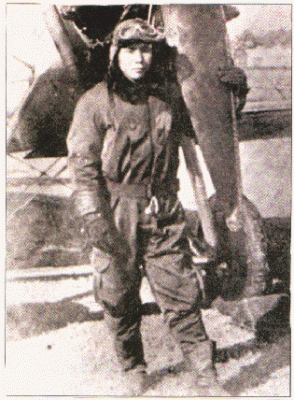
We all know the story of the bombing of Pearl Harbor, but few people know the story of the Niihau incident, when a nearby island became the unlikely site of one of the strangest and most forgotten events of the beginning of the war.
The Story
On December 7, 1941, the Japanese staged a now-infamous surprise attack on the Naval base at Pearl Harbor. During the fight Japanese fighter pilot Shigenori Nishikaichi’s plane crash-landed on Niihau, a small island inhabited by native Hawaiians, where he was unofficially taken prisoner by the suspicious locals. A few Japanese people lived on Niihau, and after communicating with Nishikaichi and learning of the invasion, they helped him make a daring escape. He then managed to get a hold of weapons and wreak havoc on the islanders for the better part of a week. The siege ended in bloodshed after Nishikaichi and one of his conspirators were attacked and killed by one of the native men and his wife. The man threw Nishikaichi against a stone wall and fractured his skull, but only after being shot three times by the desperate Japanese pilot.
The Movie
Filmmakers love telling small stories that unfold against the backdrop of much bigger, more significant historical events, and the tale of the Niihau Incident is a perfect example. With some tweaking it would easily work as a pure action film, but even in its original format it is a truly fascinating story of revenge and betrayal. The setting on a beautiful tropical island certainly doesn’t hurt, either.
9. Death in the Dyatlov Pass
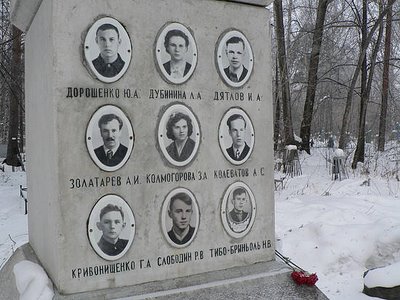
Dyatlov Pass is located in the Northern Ural Mountains. It’s in a remote region of Russia that gets few visitors, thanks in part to the extremely harsh conditions it experiences in the winter months, when temperatures can drop as low as forty degrees below zero. It’s a veritable wasteland, but it’s also the sight of one of the strangest unsolved mysteries of the last fifty years.
The Story
In 1959, a group of nine experienced hikers and skiers—mostly students from a nearby university—arrived at the pass during an overland trek through the Urals. They were set to telegraph a message back to town midway through their trip, but after days with no word a rescue party was sent. What they found in the Dyatlov Pass was a scene of unexplainable terror. Five of the hikers were found dead near their tents, dressed in nothing but their underwear and frozen from the icy cold. Another four bodies were found months later, buried beneath the snow. One was missing a tongue, and all showed signs of strange skull and chest fractures that could only have been caused by a force of great magnitude. Even stranger, all the bodies were found to have unusually high levels of radioactive contamination.
The Movie
The still unsolved case of the incident at Dyatlov pass might as well be a readymade premise for a horror movie, as all it would take is an enterprising filmmaker and writer to fill in the details of just what really happened in the mountains that night. Whether it’s a story of alien invasion or some killer mountain creature is irrelevant; what’s important is that the backdrop is absolutely true, and reality is usually much creepier than fiction can ever hope to be.
8. Prince of Poyais
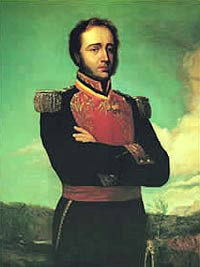
There have been plenty of movies that followed the exploits of low-level con men and swindlers, but none on the level of Gregor MacGregor, a Scottish impostor who actually managed to convince the upper crust of England that he was the Prince of a fictional country.
The Story
Gregor MacGregor started out as a soldier of fortune in Latin America, at turns fighting both for and against the armies of Portugal and Spain in Central America and Florida. When he returned to Europe in 1820, MacGregor launched an audacious moneymaking scheme by announcing that while in the tropics he had been put in control of a small (and absolutely fictional) country he referred to as Poyais. He claimed the nation to be quite modern and friendly to Europeans and even produced hand-drawn maps and a copy of their constitution to back up his story. Soon, the charming and flamboyant MacGregor was the toast of London. Lavish parties were frequently held in his honor and he managed to ingratiate himself to many nobles, including the Mayor, by promising them bogus positions in the government of Poyais. MacGregor shifted his con into high gear when he started selling plots of land in Poyais to unsuspecting settlers and raising money for a colony from investors. When the dust cleared, MacGregor had made off with thousands and two ships worth of settlers had arrived in Central America to find that Poyais was nothing but a tall tale.
The Movie
It’s hard to resist a good con story, and MacGregor’s is by far one of the most ambitious and brilliant of all time. He was also known to be an absorbing and gregarious personality, traits that in the hands of the right actor could become the building blocks for a truly electric performance. Played straight, his story is easily capable of sustaining its own film, but with a few adjustments it could also be turned into a comedy.
7. The Uranium Thief

One thing people always cite as a drawback of nuclear power is the possibility of the materials falling into the wrong hands. Amazingly, this exact situation already happened in the 1970s, when two drums of enriched uranium were stolen from a power plant in North Carolina.
The Story
In 1979, David Learned Dale, a contract employee at the GE power plant in Wilmington, NC, infiltrated a restricted area and managed to wheel out two 5-gallon drums of low-enriched Uranium. Then, he casually placed them in the trunk of his car and drove away. From there, Dale attempted to blackmail the plant for $100,000. He did it by sending the head of the plant a small vial containing some of the nuclear material, along with a letter explaining that if he wasn’t paid he would send similar vials to all the anti-nuclear groups in the country—a move that would be sure to shut the GE plant down for good. It was an audacious plan, and one that might very well have worked. However, instead of paying Dale his hush money, the plant got in touch with the authorities and a special team of investigators known as the Nuclear Emergency Response Team were brought in on the case. After a brief investigation, Dale was eventually found out and apprehended.
The Movie
Like any true story, the tale of the uranium thief would need a bit of tweaking to be ready for the big screen, but this tale of a down-on-his-luck plant worker going to huge extremes to make some cash is still a fantastic set up for a film. If this kind of story found its way into the hands of the right kind of filmmakers—think the Coen Brothers—it could make for a clever portrayal of a first-time criminal getting in way over his head.
6. Stockholm Syndrome
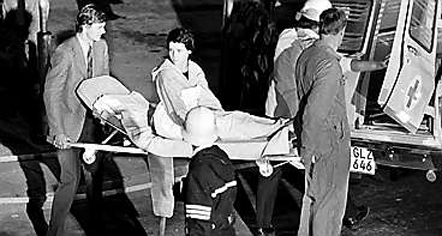
Most people know the meaning of the term “Stockholm Syndrome,” where a kidnap victim comes to sympathize with their captor, but few people know the that the term originates from a lengthy hostage situation that unfolded during a Swedish bank robbery in the seventies.
The Story
Jan Erik Olson was a career criminal who in 1973 attempted to rob a bank in the Norrmalmstorg region of Stockholm, Sweden. Police quickly arrived and a brief firefight ensued, after which the officers retreated and Olson claimed four hostages. Police tried to negotiate with the robber, who demanded that a friend, Clark Olofsson, be sent in to join him. After Olofsson was inside, police began to negotiate with the duo, and even the Prime Minister got on the phone with the criminals to attempt to work out a deal. In what led to the creation of the term “Stockholm Syndrome,” the Prime Minister later received a strange call from one of the hostages, who was angry at the way the police were handling the situation and insisted that Olofsson and Olson should be let go. After a five-day standoff, the police finally gassed the building and the robbers surrendered, letting all of the hostages go unharmed. In a bizarre twist, Olofsson later when on to become a close friend of Kristin Enmark, one of the hostages.
The Movie
The heist movie is a well-worn genre in Hollywood, but the details of the Norrmalmstorg robbery could provide a nice twist on the formula that would be fascinating to watch unfold on screen. In the right hands, the story of the origin of the Stockholm Syndrome could even be turned into an offbeat black comedy.
5. The Hunt For Blackbeard
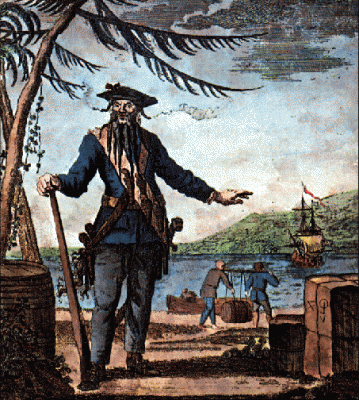
Famed pirate Blackbeard has appeared as a peripheral character in a number of movies and TV shows, but always as an embellished and cartoonish figure. This would be a chance to try and tell a historically accurate, realistic version of the life and death of history’s most famous buccaneer.
The Story
By 1718, Edward Teach, also known as “Blackbeard,” had gained fame as the boldest and most successful pirate in the world thanks to his battles with the British vessel HMS Scarborough and his notorious blockade of Charleston, South Carolina. But after receiving a pardon for his illegal deeds, Blackbeard had unofficially retired from piracy, and was living in the Outer Banks of North Carolina. He still had his enemies, though, and the Governor of Virginia eventually sanctioned a handful of ships to hunt him down. What followed was a true game of cat and mouse, as Blackbeard’s small ship and meager crew were systematically tracked and hunted down by a small fleet commanded by Lieutenant Robert Maynard. The hunt finally ended with a spectacular battle between the pirates and the soldiers, where Blackbeard was killed after single-handedly trying to take on several soldiers, including Maynard, in combat.
The Movie
Think of it as Pirates of the Caribbean for adults. Blackbeard was definitely not a nice guy, and the life of an 18th century marauder was in no way G-rated. Blackbeard was also a fairly complex figure—one any actor would surely jump at playing—and his true story is equally if not even more fascinating and action-packed than the legends that are always used in its place.
4. Paul Gauguin in Tahiti

Paul Gauguin is one of the most unique and respected painters of the post-impressionist movement, but what’s even more amazing than his works is the story of how he came to create them.
The Story
In the early 1870s, Paul Gaguin was living an ordinary life as a married stockbroker in France, all the while harboring an overwhelming desire to become an artist. Unable to let go of this dream, he eventually abandoned his wife and family and began to paint and travel. He went to Panama, Martinique, and eventually Tahiti; where he settled and painted constantly, inspired by the simple, unhurried lives of the island’s natives. Although he’d finally found peace in the islands, Gauguin’s life in the tropics was not without controversy. He frequently clashed with local authorities, and at the time of his death in 1903 he was set to begin serving a three-month prison sentence.
The Movie
Most people are enthralled by stories of how great artists came to produce their works, and Gauguin’s story happens to be one of the most interesting and complex of all. On the one hand, he was a despicable figure who abandoned his family and died young thanks to a hard-drinking lifestyle. On the other hand, he was an important artist who painted true masterworks and was even known to stand up for the native people of Polynesia against the colonial government. Those kind of flaws and contradictions are the things that great actors love to see in a role, and there’s little doubt that they’d all be lining up to get a chance at playing Gauguin.
3. Hemingway’s Early Days

Few writers are as renowned and beloved as Ernest Hemingway, so it’s amazing that there still hasn’t been a major film made about his life. His early days especially, which saw him travel to Italy to work as an ambulance driver during WWI and then settle in France, seem like perfect fodder for a film biography.
The Story
After serving as a Red Cross ambulance driver on the Italian front during WWI and being severely wounded, Hemingway briefly returned to America before taking off for a new life abroad in France. His time spent in Paris during the roaring 20s served as inspiration for a number of his best books, most notably A Moveable Feast, as it saw him eke out a living as an expatriate foreign correspondent while hobnobbing with such literary luminaries as F. Scott Fitzgerald and Gertrude Stein. This time in Hemingway’s life also saw the writer travel around the rest of Europe, including Spain, where he developed a now-famous fascination with bullfighting.
The Movie
Big, sweeping “life story” films rarely come out well, which is why it would be interesting to see a movie that depicted a particular time and place in an iconic person’s life. Hemingway’s time in Paris represented the formative part of his career, and there’s no doubt that it would be a lot of fun to see how a writer of his prowess started out. Because of the huge amount of artists that were living in Paris at the time, the film would also be able to include small depictions of other now-famous figures like Pablo Picasso, James Joyce, and Ezra Pound.
2. The Desert Fox
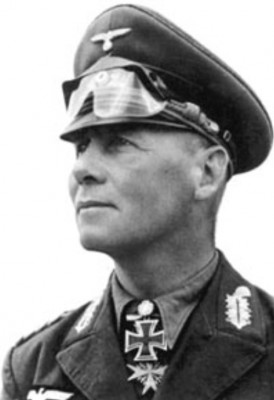
Erwin Rommel is remembered as one of the greatest commanders on the German side during WWII. But what is often forgotten is that even though he was a hero of the Nazi Party, Rommel was also very much opposed to Hitler’s policies and eventually joined a secret plot to overthrow the German dictator.
The Story
Erwin Rommel was one of the great German heroes of WWI, and at the beginning of WWII he petitioned Hitler for control of an armored tank division. Though he had no previous experience commanding mobile infantry, he soon distinguished himself on the battlefield in North Africa, where he became known for his bold style of advancing and attacking the enemy even when outnumbered. It was here that Rommel earned his nickname “the Desert Fox,” and he was eventually promoted to the rank of Field Marshal. Still, at the same time that he was a national hero, Rommel disagreed with many of Hitler’s policies. He was known to treat all prisoners humanely, and outright disobeyed Hitler’s orders that all Jews should be killed on sight. After returning to Europe at the end of the Africa campaign, Rommel became convinced that Hitler had to be stopped, and he joined a conspiracy to remove him from power. An assassination attempt failed, and Rommel’s involvement soon came to light. Rommel was ready to be arrested and stand trial, but after being convinced by two of Hitler’s Generals that the process would be painful for his family, he took his own life in 1944.
The Movie
Like Patton, Rommel is well respected by military historians for his do-or-die attitude, but he was also reckless, and this is a quality that would make him an interesting character to portray in a film. There is also the unusual nature of the North Africa campaign, which relied heavily on tank combat, an inherently cinematic aspect of WWII that has yet to really be explored in the movies. Overall, though, the biggest draw to Rommel’s story is the redemptive aspect of it—that he eventually turned on Hitler and tried, in his words, “to come to the rescue of Germany.”
1. The Life of Nikola Tesla
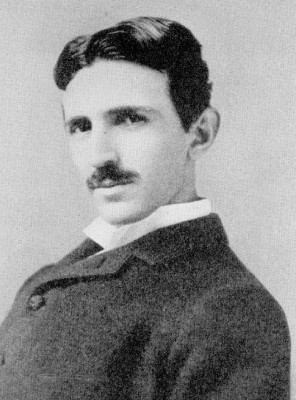
Nikola Tesla was one of the most brilliant, influential, and downright weird figures of the turn of the century. His inventions helped change the world, but he lived a troubled life full of huge failures and ridicule from both his peers and the media.
The Story
Tesla got his start working for Thomas Edison’s company in Europe in the 1880s. He immediately established himself as a major talent, scoring a number of patents for Edison in his first few years with the company. He parted ways with Edison in 1885 when a dispute arose over money, and the two remained bitter rivals for the rest of their careers. Tesla was left penniless for a time, and even briefly worked as a ditch digger before bouncing back with his invention of radio and the now-famous Tesla Coil. Later, he would finally win a years-long battle when his Alternating Current was proved to be superior to Edison’s flawed Direct Current, a fact that Edison himself would admit later in life. Despite his brilliance, with age Tesla began to develop several peculiarities and preoccupations that many now believe to have been a severe case of obsessive-compulsive disorder. He began to make wild scientific claims, and even spent his last days working on a “death ray” that he believed would change modern warfare. His bizarre invention was never picked up, and he died nearly penniless in New York, considered by many to have taken on the role of a dangerous mad scientist.
The Movie
Tesla’s story certainly doesn’t have the happiest of endings, but he lived a mesmerizing life that saw him travel the world and single-handedly advance science toward the electrical age. On film, though, the most engrossing aspect of his story would surely be his legendary rivalry with Edison, along with the sheer lunacy of many of his inventions. Most of all, his story coincides with the beginning of the industrial age, and the tale of his ups and downs would be the perfect prism through which to view the many ways the world has changed since the dawn of modern technology.








{ 0 komentar... read them below or add one }
Posting Komentar